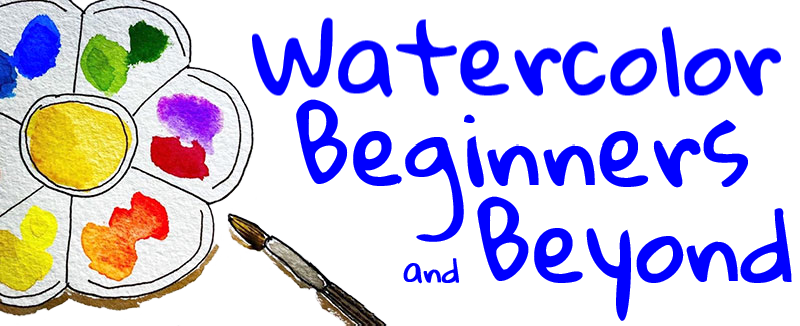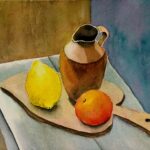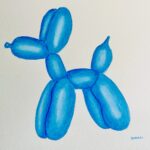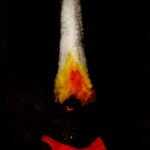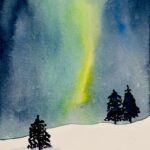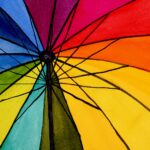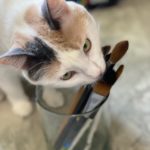
Paper quality is the most important ingredient in watercolor painting… then paint… and lastly brushes. That’s not to say brushes aren’t important. They are.
Brushes. It can be overwhelming deciding which to buy. Natural hair, synthetic, mixed? Brush shape: round, rigger, sword, flat, angled flat, filbert, oval wash, quill, mop, hake?
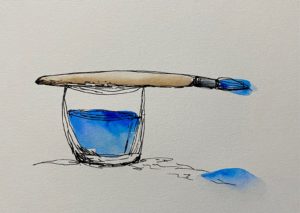 Characteristics of watercolor brushes
Characteristics of watercolor brushes
There are three characteristics of watercolor brushes to consider:
–how much water does it hold
–does the brush maintain a sharp point or edge
–does the brush snap back to its original shape when lifted from the paper
Bristle types
Sable is considered the best, and Kolinsky sable is considered the premium sable. Sable gets an A+ for each of the characteristics above. However… It is expensive.
Squirrel brushes hold more water than sable, but they do not snap back to its original shape.
Synthetics are more durable than natural hair and do a pretty good job. And they are much less expensive.
Brush shape
Round – fine lines, broader strokes. Larger round brushes are good for washes
Flat – great for making straight edges and blocking in color
Filbert – their rounded edge makes them a combination of round and flat
Mop and wash – used for looser work, covering a large area
Rigger – long thin bristles to create fine lines
What I use
An inexpensive synthetic Simply Simmons round brush size 8 for mixing paint, smoothing edges, and doing dry brush technique. These three tasks are hard on brushes. Then I use the Kolinsky sable brushes for the fun part — painting.
#ad As an Amazon Associate I earn from qualifying purchases.
